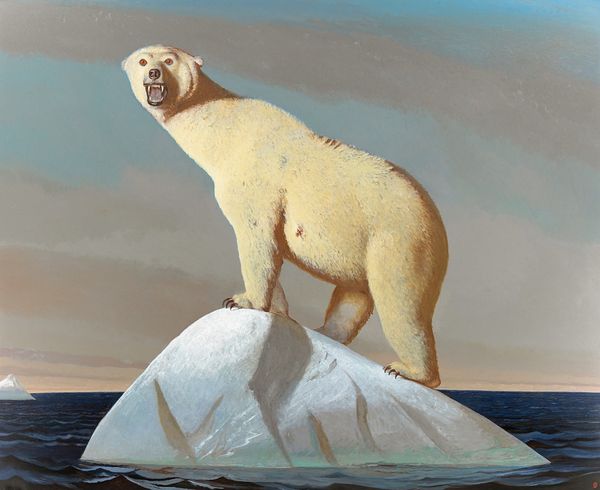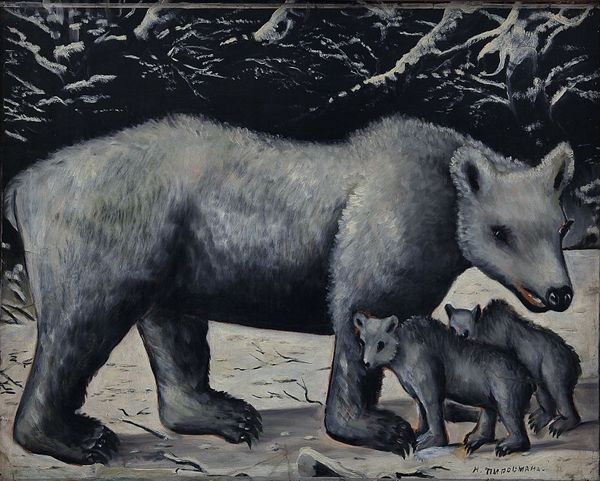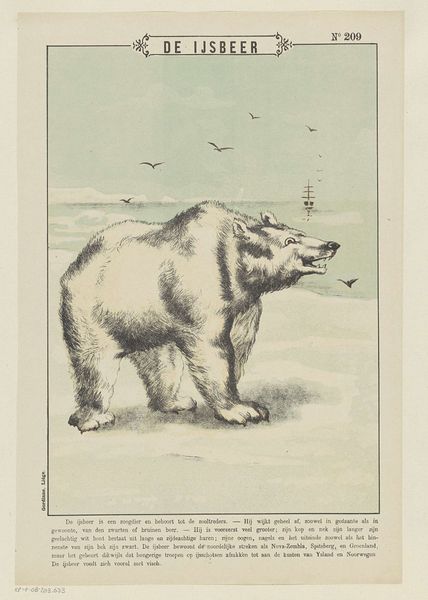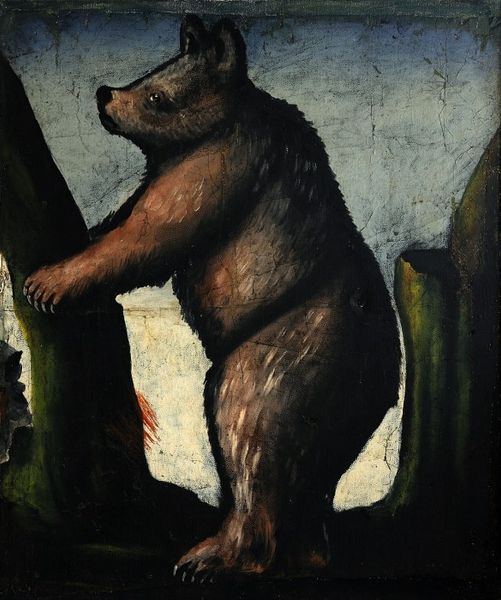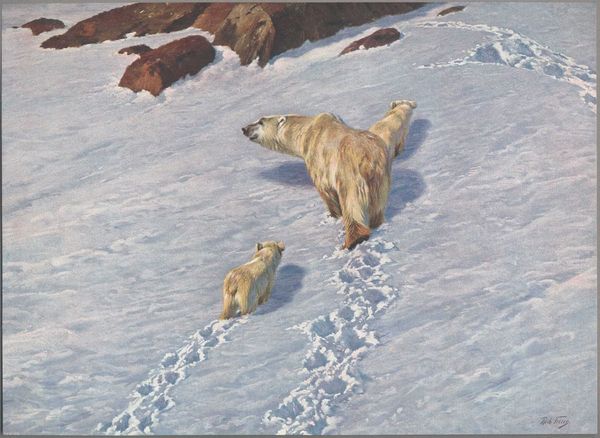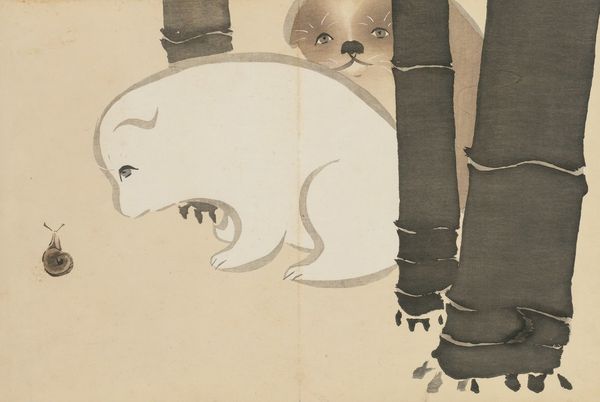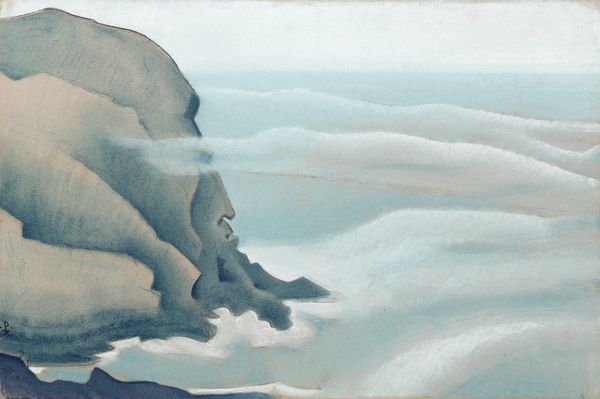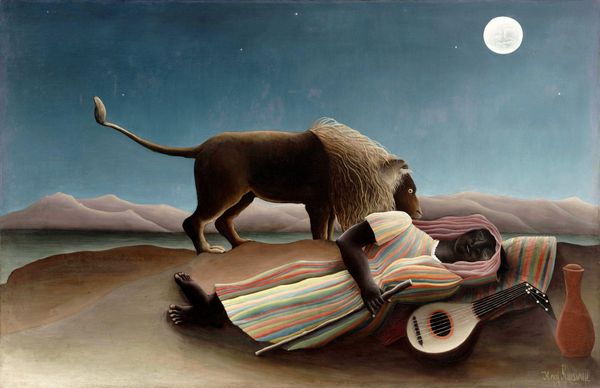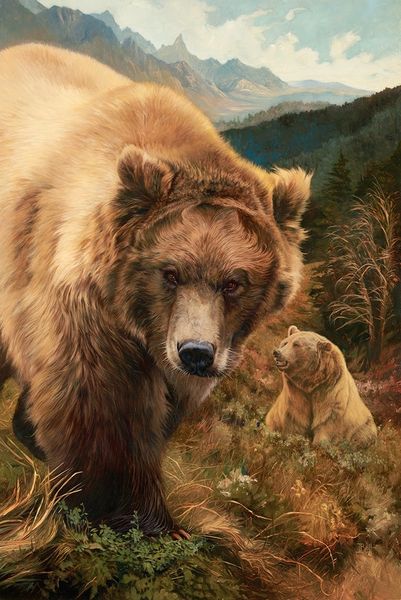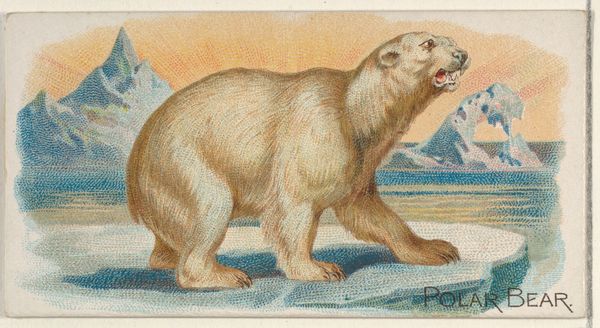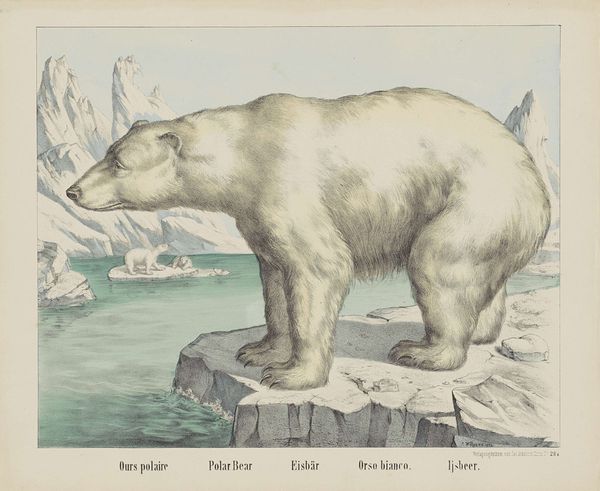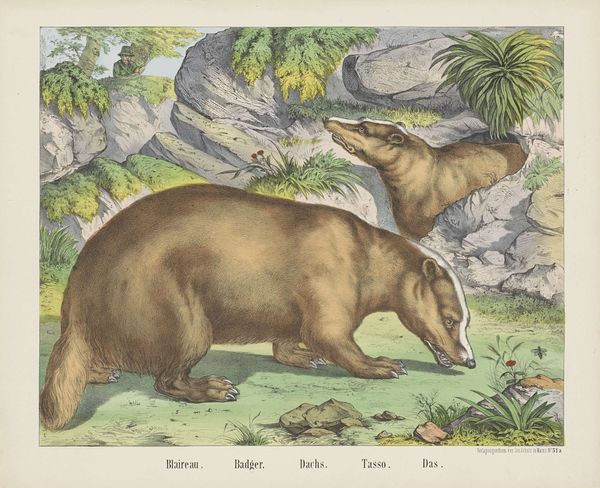
Dimensions: overall: 89.5 x 102 cm (35 1/4 x 40 3/16 in.) framed: 103.5 x 116.2 x 5.7 cm (40 3/4 x 45 3/4 x 2 1/4 in.)
Copyright: National Gallery of Art: CC0 1.0
Editor: Here we have Charles S. Raleigh's "Law of the Wild," painted in 1881, using oil paints. The drama between the polar bear and the seal on the ice floe feels intense, almost theatrical. What do you make of it? Curator: The scene is compelling. The inclusion of the ship in the background brings up interesting historical considerations. Think about the late 19th century: increased Arctic exploration, the romanticized and often brutal view of nature, and the impact of industrialization even on seemingly untouched landscapes. Editor: So, you’re saying the painting might be more than just about the animals? Curator: Exactly! The polar bear's dominance over the seal becomes a metaphor. A metaphor, perhaps, for humanity's perceived dominion over the natural world. Notice how the ship seems to be an almost oblivious intruder, a symbol of encroaching civilization. Is Raleigh celebrating the power of nature or critiquing the human disruption of it? Editor: I see what you mean! The bear's expression, almost a grin, does feel a bit unsettling now, considering what we know about the impact of climate change on polar bears today. It changes how we view the scene entirely! Curator: Absolutely. The painting becomes a record of a particular moment in history but also resonates with contemporary issues concerning ecological imbalance. How the representation of nature shifts to reflect a period's preoccupations and concerns is a critical lens through which to view it. Editor: I never considered how much history could be packed into an animal painting. It gives me a lot to think about. Curator: It shows us that even seemingly straightforward images can hold layers of cultural meaning, which are amplified when considering the political forces at the time they were created.
Comments
No comments
Be the first to comment and join the conversation on the ultimate creative platform.
